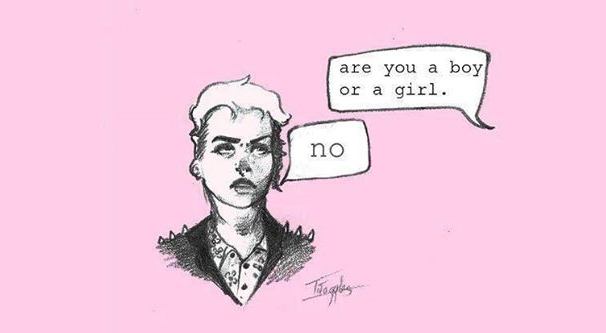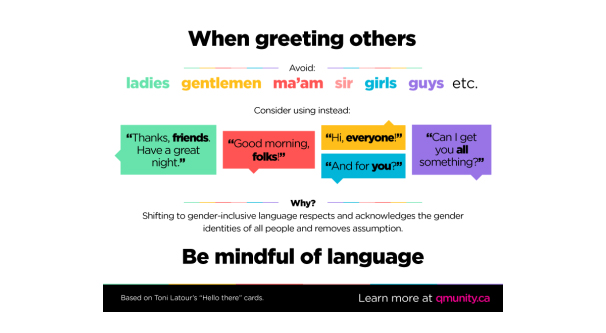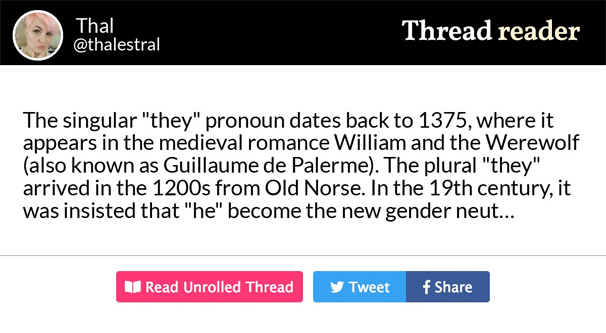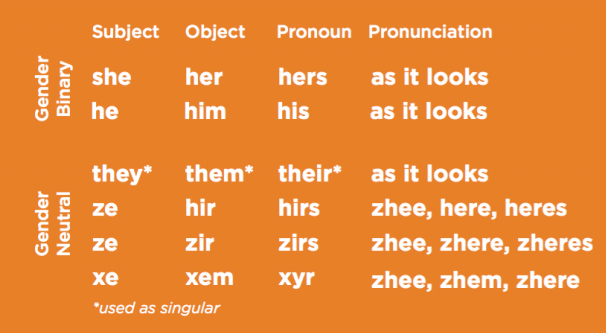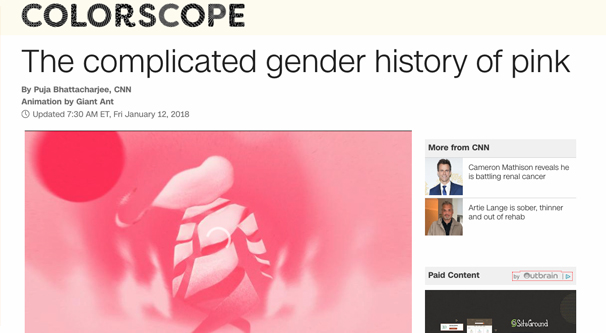How to Write Emails That Are Gender Inclusive

Public perception of gender as a spectrum rather than a binary is growing every year. No longer are people restricted to simply male and female, when a variety of different combinations can be true for different people. Times are changing, and you need to change with them.
How can you adapt to this changing understanding, in a way that comes across in even your email communications? Here are some tips.
Forget Political Correctness
One of the most common arguments against using gender-neutral language is that it’s somehow “political correctness gone wild”. The idea is that some small but vocal group of people is somehow enforcing their idea of gender on the wider population when somehow it really doesn’t matter to most.
The very idea of political correctness is itself a form of oppressive language. Calling something politically correct is a way of downplaying the importance of that thing to the people who are affected by it. The same kind of rhetoric is used in support of white nationalism and other racist ideologies.
Now, I’m not saying that just because you think something is too PC, you’re automatically a nazi, or any other extreme assumption like that. All I’m saying is that there’s not really any such thing as “politically correct” as it is currently used.
The fact is, times are changing, and yet the situation isn’t necessarily any different. There are hundreds of mentions throughout history of women living as men, men living as women, and people who didn’t quite fit either definition. What is changing today is public acceptance of the reality of this situation. A majority of the millennial generation agrees that gender is a spectrum, and 12% of millennials identify as either transgender or gender non-conforming.
Essentially, the idea of a gender binary is on its way out with the younger generations, so effective communication with those generations will need to understand that.
Understand Why
Perhaps the best thing you can do to adapt your communication to a more modern understanding of gender is simply to understand why it’s important.
Gender when viewed as a binary is a limiting and constraining factor on millions of people. Remember that not even biological sex is a binary; there are intersex people and people with a variety of different chromosomal differences that put them outside of that binary. With gender being an outward presentation rather than a biological definition, it can be as fluid as the individual wants it to be. Just think of someone like David Bowie. Bowie spent much of his career in a variety of androgynous presentations.
When a person is constrained to a label they do not feel is correct, it burdens them with stress. This can be any label, really. Fear of being labeled “poor” is what keeps many lower-middle class households over-spending to present as more wealthy outwardly, while struggling with debt and the threat of poverty internally. Likewise, being labeled a woman when you feel internally that you are a man is a burden of stress that can lead to anything from generalized anxiety to suicide.
This brings us to the first reason why gender-neutral or gender-inclusive language is important in communications, and that’s compassion. With a simple, minor change in the way you write emails, you can avoid putting unnecessary stress on people around you or people you communicate with.
The second reason is more pragmatic. If the emails we’re talking about are business communications with clients or with potential customers, making them gender-neutral or gender-inclusive means you will connect with more people.
Consider the statistic above: 12% of the millennial generation as polled in 2017 identify as either transgender or gender non-conforming. If you address your audience in gendered terms, you are potentially alienating 12% of your audience. That’s 12% of your potential customers or clients who suddenly have a negative impression of you.
Though, the reality is still such that the majority of businesses and communications are gendered in a way that doesn’t comply with the presentation or identification of the user. You aren’t likely to have any worse of a reaction from those 12% than the baseline. Rather, by including gender neutral language, you gain a better reaction from those 12%. Suddenly you are viewed as a more inclusive and aware company, and 12% of millennials – and even more, the majority who agree about the gender spectrum – will have a better impression of you. People support companies that support them, which you can do with a simple change in language.
Specific Tips
So how can you actually make use of gender neutral language or gender-inclusive language in your emails? Here are some more specific tips.
Use their name. Many email systems allow you to collect data on your users beyond just their email address. One such piece of data is their name. Instead of a gendered greeting, simply personalize the email with their name. This has been good business practice for years.
Now, there can be some disconnect with names as well, specifically with transgender users. Transgender people often change their names, and using their “dead name” can be as bad as misgendering them. However, at least in this case you have an excuse; they provided you with the name. If you’re using the wrong one, it’s not really your fault. That said, you should make sure your system is responsive to requests to change data like name and gender in your lists.
Use non-gendered titles. If you’re writing to someone and you know their title, use their title instead of a gendered greeting. Instead of “Mr. Jones”, use “Dr. Jones”.
This works in general, but can fall apart in specific situations. For example, one issue even mentioned by the United Nations is downplaying one gender’s titles. For example, saying “Dr. Jones and Ms. Gates” when Gates is a PhD as well is both common and discriminatory. Use “Dr. Jones and Dr. Gates” instead.
Another issue is when your communication is intended to be more casual and personal. Using a title is pretty formal as a means of address. You wouldn’t refer to your close friend by their title, it sounds awkward or ironic.
Of course, you also have situations where the user doesn’t have a title you can use in that way. Thus, using titles isn’t always ideal.
Use the singular they. When we refer to people as he or she, we’re using pronouns. There are many options for pronouns – I’ll get to that in a moment – but the most typical are he, she, and they. He and she are obviously gendered, and they is gender-neutral.
One common complaint about using “they” as a pronoun is that it’s traditionally used as a plural pronoun. You refer to one man as he, one woman as she, and the pair of them as they. Except this isn’t always true, and in fact hasn’t been true for a very long time. They Oxford English Dictionary has found records of using “they” as a singular pronoun as far back as 1375.
The downside of using a singular “they” is that it still refers to someone who isn’t present. If you’re talking to someone directly, you generally don’t refer to them as “they” unless they are specifically asking you to use a non-gendered pronoun for themselves. Even then, you don’t typically address a person by their pronoun directly to them, it’s for talking about them, so it’s less of a concern than you might think.
Know where to draw the line. There are a lot of pronouns out there that people have just made up for themselves. A lot of these are used for people who choose more fanciful pronouns, like “bun/bunself“, for people who believe they are somehow rabbits in their souls, or something.
The issue with these kinds of pronouns is that they are extremely narrow and refer to non-gender forms of identity. While the perception of gender as a spectrum is on the rise, the idea of gender being something beyond humanity is not. Many of these animal-based genders may also be tongue-in-cheek jokes from Tumblr or another source, or even made up to mock more legitimate gender non-conformity.
I recommend that you never use these kinds of pronouns in communications. The one possible exception might be in a personal conversation with a person who demands those pronouns, but even then it’s generally easier to just use they.
One of the most common non-standard pronouns is the set using Xs, the Xe, Xir, Xem, and Xeir pronouns. These are the closest non-standard pronouns to gaining widespread acceptance, and are used for gender-nonconforming or non-binary people.
You can use these pronouns in personal conversations with people who expressly request them, but for the moment their acceptance isn’t widespread enough to use them regularly. Additionally, there are a bunch of other pronoun sets from various sources, such as the Spivak pronouns, that also don’t have the widespread acceptance necessary for regular business communications.
The reason you should know when to draw the line is primarily because of this lack of acceptance. When you include something like the singular they, your audience can recognize it and respect it. When you include something like bunself, you start to look like you’re including as many options as you can because you have no idea what you’re doing. Or, worse, you look like you’re doing it with the express purpose of mocking alternative gender situations.
Obviously, mocking people isn’t going to do you any favors in your email communications, so it’s best to err on the side of gender-neutral caution.
Avoid other indicators of gender. One of the biggest indicators to avoid these days is color. In the last several decades, there has been an explosion of gendered products using pink as feminine and blue as masculine. This ignored the part of history where pink was a masculine color, but that’s not the point here.
This explosion of gendered products started as a potentially reasonable way to market to different audience segments, but quickly expanded to overtake all sense of reason. It’s so prominent and exploitative that you can chart the “pink tax” in today’s markets. Two identical products, one pink and one blue, and the pink one will often cost more.
For obvious reasons – consumers aren’t stupid – this unnecessary gendering of products has become a target for activism and call-outs. Unnecessarily gendered products are no longer a benefit to sales.
What does this have to do with emails? Well, think about newsletters. Are you announcing a new product line with an audience of primarily women? Maybe don’t rely on pink for your branding.
Both pink and blue are fine on their own and mixed with other colors. The issue comes when the gendering is attached. If you have two similar products, avoid the pink and blue color choices. Pick pink and green, or blue and yellow, or some other combination of colors that suits your graphic design.
Just give it a try. The fact is, it’s really not all that hard to just use “they” instead of he or she. A lot of emails you typically write aren’t actually going to include gendered language at all.
The best thing you can do is treat people with respect. If someone asks you to refer to them by a specific gender or set of pronouns, it costs you nothing to do it. Otherwise, simply use a gender-neutral option. Until such time as more pronouns become a commonplace element to the English language, they aren’t really worth worrying about for the one in a million customer who might demand them.


